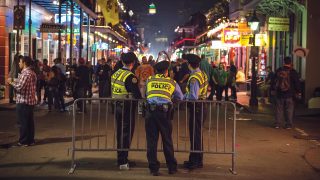
A mass casualty event, whether it is human-generated or a natural disaster, leaves in its wake not only physical destruction and chaos, but also significant psychological costs. Intentional human causality may be particularly incomprehensible to survivors and responders, as it may be difficult to make meaning from the purposeful infliction of suffering. The distress involved in these types of incidents, whether it is from direct or vicarious exposure to trauma, can be infectious, with far-reaching ripple effects. As we grieve the loss of lives in several recent shootings, including the killing of Officer Eric Talley in Colorado, we are grimly reminded of just how catastrophic these events are. Below I discuss the types of events that activate traumatic responses and how to exercise your resilience muscle to activate post-traumatic growth.
Like a virus, stress and trauma are contagious, and they can be “caught” through exposure to traumatic events. Dr. John Nicoletti, a police psychologist who has practiced for more than 40 years in Colorado (and my mentor), describes the various “strains” of trauma that may affect us. These four strains of trauma are “too much, too ugly, too soon”; “too much, too ugly, too long”; “too much, too ugly, too similar”; and “too much, too ugly, too different.” “Too much” and “too ugly” refer to the intensity of the trauma. “Too soon” refers to a rapid onset of a traumatic event. For example, during the Aurora, Colorado, theater shooting, responders had to act immediately and therefore had little preparation prior to entering the theater. “Too long” refers to prolonged exposure to trauma, such as in the case of continuous sexual abuse. “Too similar” refers to trauma that is similar to other life events, such as in the case of emergency response personnel who experience cumulative exposure to various critical incidents. “Too different” refers to exposure to a traumatic incident that is unpredictable — for example, the 9/11 terrorist attack, which was vastly different than what responders had previously experienced or could have imagined. These types of trauma can overlap, as an individual can experience several types of trauma. If you think back on those calls that have had a greater hold over you than others, it is likely that they fall into one of the above categories. While experiencing trauma does not mean you will go on to develop post-traumatic stress disorder (PTSD), it is important that you take preventative measures in order to inoculate yourself and build resiliency.
While it is important to exercise your resiliency muscle regularly, it is even more important to do so after a traumatic event.
Like a muscle, resiliency can be strengthened over time. While it is important to exercise your resiliency muscle regularly, it is even more important to do so after a traumatic event. Below are some key recommendations that encourage post-traumatic growth.
Avoidance. Avoidance of additional trauma exposure can be permanent or temporary. Permanent avoidance, such as leaving the profession, is not a viable or desired solution for many. On the other hand, temporary “avoidance” is much more doable. Take time off when you can, and make sure your vacation time is actually vacation time (not time to work on unfinished house projects!). Do not expose yourself to unnecessary additional trauma at work. (For example, if you do not have to look at a crime scene, don’t do it.)
Inoculation. Create a buffer against trauma. Seek out social support. When experiencing stress and trauma, our bodies begin releasing chemical stress hormones. Spending time with friends, family and loved ones creates a buffer against the negative effects of stress and is a key factor in fostering resilience. Practicing self-care, prioritizing stress reduction, downtime and exercise, is essential to avoiding burnout and maintaining resilience. Regular exercise helps to prevent the buildup of stress chemicals in your body and will help you recharge after a long shift. The time when you least want to engage in stress-relieving activities is the most important time to do it. Develop other “identities” outside of work; investing in the roles of parent/spouse/coach and developing hobbies that are not connected to first responder duties allows for more balance and flexibility when it comes to adapting to adversity.
Decontamination. There are a few ways you can purge the trauma. The first is talking about it. Oftentimes, officers fear sharing a traumatic event because they do not want to traumatize their loved ones. While this is normal, it is important that you have someone you can share the uncensored version of the story with. Talk to a friend, co-worker, peer supporter, therapist or even the family pet! Utilize your resources. If you are not a “talker,” write it down. Writing about an event can assist the brain in processing what happened. (You don’t have to keep the writing; it’s the process that matters.)
Remember that when you are going through a tough time, you do not have to worry alone. Respond to the psychological trauma the same way you would respond to a physical trauma: You wouldn’t judge yourself for needing a doctor’s assistance resetting a broken bone, so don’t judge yourself if you need assistance resetting after a psychological trauma.
As seen in the May 2021 issue of American Police Beat magazine.
Don’t miss out on another issue today! Click below:






